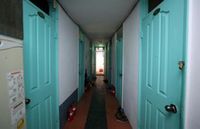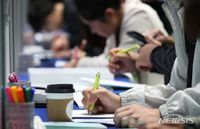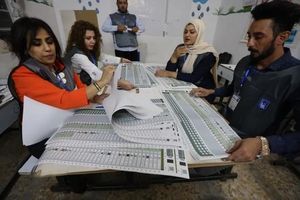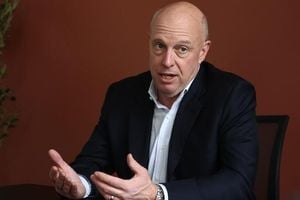On September 15, 2025, a new chapter in South Korea’s approach to social welfare and youth poverty quietly began in four districts: Incheon Gyeyang-gu, Daegu Dalseo-gu, Gangwon Cheorwon-gun, and Jeonnam Haenam-gun. The Ministry of Health and Welfare, in partnership with the Korean Institute for Health and Social Affairs, launched a six-month pilot program that could reshape how the nation supports its most vulnerable young adults. The program aims to address a persistent blind spot in the country’s basic living security system—one that has left many young people struggling to make ends meet, even while technically eligible for government aid.
Under South Korea’s current National Basic Living Security System, living allowances (known as "saenggye-geubyeo") are paid out on a household basis. This means that unmarried children under 30, even if they live separately from their parents, are still considered part of their parents’ household for welfare calculations. As a result, the entire family’s allowance is deposited into the parent’s account. If the parent fails to forward living expenses, the young adult living alone can be left in dire straits—cut off from the very support intended to keep them afloat. According to Yonhap News, this often results in young people facing severe financial hardship, despite being eligible for assistance.
Recognizing the urgency of the issue, the Ministry began collaborating with the Korean Institute for Health and Social Affairs in April 2025, commissioning a research project to examine and address these gaps. The pilot program—officially titled the “Basic Living Security System Youth Household Criteria Improvement and Simulation Application Study”—is set to run for six months, concluding in February 2026. Its core innovation? Allowing 19- to 30-year-old unmarried individuals who live apart from their parents to apply for and receive their own living allowance, independent of their family’s.
The pilot is more than just a bureaucratic tweak. For the first time, young adults who qualify can receive support directly, rather than relying on parental goodwill. For example, as illustrated by DaeGu Ilbo, in a household of three with no income or assets, the current system pays the full 1,608,113 won to the parent. Under the pilot, the parent would receive a reduced two-person household allowance of 1,258,451 won, while the young adult would directly receive a one-person allowance of 765,444 won. This shift aims to ensure that young people living independently are not left behind simply because of outdated administrative definitions.
But why were these four districts chosen? According to the Ministry, a nationwide call for applications was held from August 25 to September 3, 2025, and Incheon Gyeyang-gu, Daegu Dalseo-gu, Gangwon Cheorwon-gun, and Jeonnam Haenam-gun were selected as pilot sites. These areas, representing a mix of urban and rural communities, provide a diverse testing ground for the policy’s real-world impact.
The need for reform is not just theoretical. The Ministry has highlighted real-life examples where the current system’s rigidity caused unnecessary hardship. In one case, a young adult identified as A had to move between homeless shelters after splitting from their parents due to family conflict and illness. Despite having no contact with their parents and being unable to work, A could not qualify for separate support because they lacked police records proving family estrangement. Only after relocating to another district was A finally recognized as a separate household and granted assistance.
Such stories are not outliers. As Civil Reporter points out, the current exception criteria for recognizing a young person as a separate household—such as cases of family breakdown or domestic violence—are inconsistently applied, often depending on the discretion of local officials. The pilot program aims to clarify and standardize these procedures, ensuring that young people in genuine need do not fall through the cracks.
Importantly, the Ministry is not just looking to help those already in the system. The pilot will also seek to identify and support young people who are not currently receiving benefits, either because of family estrangement or because their parents’ financial situation disqualifies the household as a whole, despite the young person’s individual poverty. According to Yonhap News, this proactive approach could uncover and assist a hidden population of economically vulnerable youth.
Isran, the First Vice Minister of Health and Welfare, emphasized the government’s commitment to finding practical solutions. “We are considering ways to support young people who are unable to get help from their parents and must shoulder the burden of living expenses on their own. Through this pilot program, we will apply separate household support measures at the local government level and use the results to develop effective and realistic solutions to eliminate blind spots in youth poverty,” Isran stated, as reported by DaeGu Ilbo and Civil Reporter.
The pilot is also part of a broader effort to address related issues, such as unreported or illegal births—a problem that can leave individuals without family registration or legal recognition, and thus without access to public benefits. According to Civil Reporter, the Ministry is conducting a comprehensive survey in the same four districts to identify cases of illegal births and births outside the family unit, with a special focus on women aged 19 to 30 who gave birth from the 20th century onward. The goal is to resolve issues related to unreported births, protect the rights of those affected, and prevent discrimination and social exclusion.
As of mid-September 2025, the survey had already identified several cases where support funds were improperly allocated due to unregistered births. For instance, three illegal birth cases were found without family registration or proof of birth, with one woman having illegally received over 1.6 billion won in family support funds, and 20 women collectively receiving more than 1.2 billion won, according to DaeGu Ilbo. The Ministry is determined to address these issues and ensure that all citizens—regardless of their family situation—can access the support they need.
Ultimately, the pilot program and the accompanying survey represent a significant step toward a more inclusive and responsive welfare system. By testing direct payments to young adults and seeking out those who have been excluded from assistance, the Ministry hopes to close the gaps that have left too many young people struggling in silence. The results of this six-month experiment will inform future policy, with the potential to reshape the nation’s approach to youth poverty for years to come.
As the pilot unfolds, all eyes will be on these four districts. For the young people at its center, the stakes couldn’t be higher—and the promise of a safety net that truly catches those in need has never felt more urgent.





